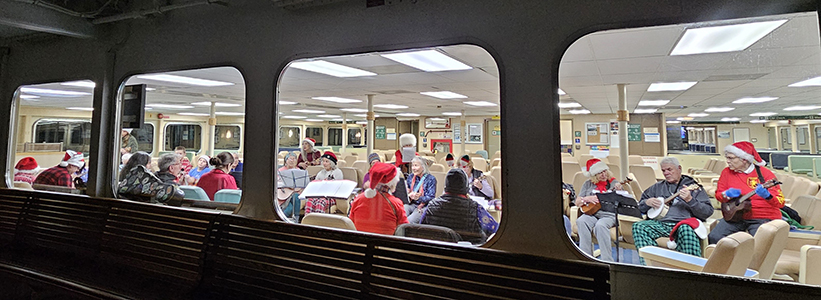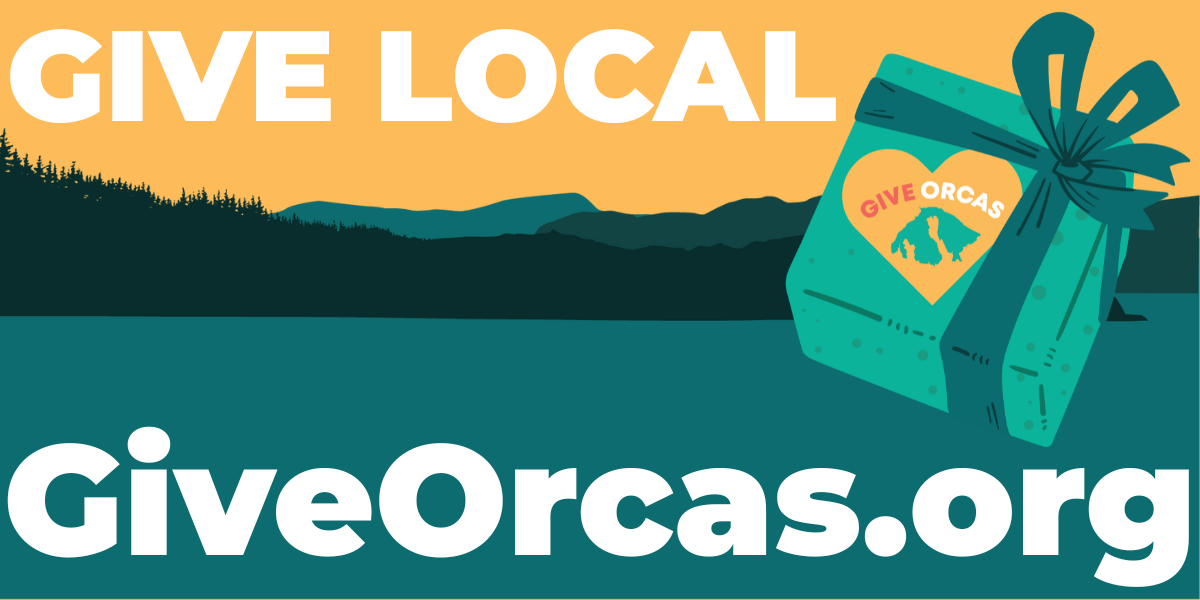— from Suzanne Olson for Orcas Power & Light —
At the September board meeting, the OPALCO Board of Directors unanimously resolved to support:
- Effective actions to save the resident orca whales in the Salish Sea
- Effective actions to restore salmon runs as determined from existing and future BiOps
- Continued operation of the Federal Columbia River Power System, including the four Lower Snake River dams, for the many benefits they provide including emissions-free, renewable, reliable, low‐cost energy
OPALCO supports the whales and our hydro system. The Co-op Board, along with more than 25 peer utilities in the region, places their trust in the ongoing federal environmental study to provide the science necessary to understand the full web of interdependent issues at play that includes – in addition to salmon: water temperature, vessel noise, ocean acidification, pollution, forage fish habitat and climate change.
Board President Vince Dauciunas stated, “We believe we can build a successful future for our Orca whales, salmon, forage fish and wildlife, clean air and water, while keeping our power carbon free with the federal hydro system and all of the benefits it brings to the region.”
The resolution was read at the September board meeting with members in attendance. Board materials are posted online each Monday before a board meeting at www.opalco.com. Read the full resolution: https://www.opalco.com/wp-content/uploads/2019/09/September-2019-Board-Materials.pdf (pages 12-13). Members are welcome to attend board meetings.
Orcas Power & Light Cooperative (OPALCO) is our member-owned cooperative electric utility, serving more than 11,400 members on 20 islands in San Juan County. OPALCO provides electricity that is 97% greenhouse-gas free and is generated predominantly by hydroelectric plants. OPALCO was founded in 1937. Follow OPALCO @OrcasPower on Facebook and Twitter.
**If you are reading theOrcasonian for free, thank your fellow islanders. If you would like to support theOrcasonian CLICK HERE to set your modestly-priced, voluntary subscription. Otherwise, no worries; we’re happy to share with you.**








I did attend the board meeting but was unfortunately the lone voice in the room speaking on behalf of the salmon. The amount of electricity generated from the four lower Snake dams represents only 5% of total electricity consumption in the NW power grid. I can’t speak for others, but personally, I’d be more than happy to use at least 5% less electricity or invest more in renewable energy (or both) if that means the salmon and orca have a fighting chance of surviving.
Yes, the NEPA study which is underway will “provide the science necessary to understand the full web of interdependent issues at play that includes – in addition to salmon: water temperature, vessel noise, ocean acidification, pollution, forage fish habitat and climate change.”
So why not wait for the study to conclude before rushing into the decision to oppose further study (called for by the Governor Inslee’s SRKW task force) and oppose dam removal?
OPALCO is the only electric utility surrounded by the Salish Sea, home of the salmon and orca. If it doesn’t stand up for the rights of these vulnerable creatures, who will? I hope the board will represent the values and concerns of its membership and reconsider its decision. Thank you.
The OPALCO resolution states, “We oppose the removal of the dams because we don’t believe it will solve the problem for our fish and the food chain and may worsen the situation.”
If OPALCO was really “supporting the whales” it wouldn’t be opposing the removal of the dams BEFORE THE STUDIES ARE FINISHED. What we do know is that orcas are starving. It’s also clear in general that dams kill juvenile salmon going downstream and reduce the number of adults that can make it back upstream to spawn. In light of that, the very least OPALCO should do is hold off and wait for the science.
Susanne — I don’t envy you. It’s impossible to defend an indefensible decision.
More salmon, less study!
RE: Page 14-17 of the September Board Materials.
https://www.opalco.com/wp-content/uploads/2019/09/September-2019-Board-Materials.pdf
OPALCO’s requesting $15 million more in RESP funds after just being approved for $5.8 million a few months ago. Of that $5.8 million, only $445k (less than ten percent) was used for member efficiency projects and now there only happens to be $200k remaining from the original $5.8 million. So what did OPALCO spend 5 million dollars on, in just the past few months nearly wiping out these loan funds, and why did it happen so quickly?
Months ago, the author of this post for OPALCO, replied to a comment of mine expressing concern about the original $5.8 million loan and how that may potentially affect rates via OPALCO’s balance sheet. I was assured that it would not. However, I’m now reading from these pages (14-17) that RUS’ TIER calculation is based on a 5.5% borrowing rate, so the original 5.8 million dollar loan and now the new 15 million dollar loan (if approved) for a total of $20.8 million will be calc’d at 5.5% interest, which equates to $1.14 million in interest payments alone. I’m sorry, but I cannot possibly understand how borrowing this amount of money at a calculated 5.5% rate does not impact our electric rates now and in the future.
Something doesn’t add up.
As long as we insist on what seems to be viewed as our unqualified right to use fossil fuels at the rate our collective life style demands, we will continue standing with one foot on the dock and one in the boat. This is not a stable condition. We can’t have it both way, and we won’t. Anyone still driving a fossil fueled vehicle while blaming OPALCO is trying to have it both ways. Used EVs coming off lease are well within reach today.
Just as nature’s web is interwoven, so is that of the grid on which our standard of living relies. Simplistic thinking leads to unanticipated results. For instance: salmon are cold water creatures. We are warming the regional waters. Snake River dams or no Snake River dams, the salmon will not hang around while our fossil-driven economy warms the Salish Sea.
The resolution complained of points out that measures are being taken to enable safe and healthy salmon runs. While this is an engineering solution, nature only cares about results, and this effort is exerted at great expense for the salmon, not for our strongly felt and widely shared sense of esthetics.
Success on our part will require a strong but different economy. Think about what it would look like. Hint: it will not look like the 1800s. Then for gosh sakes give input to the economic section of the comprehensive plan before it gels, sets, and hardens. Drive electric, grow the county economy and make it green.
OPALCO has been and continues to be a really good, intelligent local utility. Count our blessings, folks.
Mr. Herbert’s post is full of inaccurate assumptions and does not reflect what OPALCO is doing or what was actually published in the September 2019 Board materials (www.opalco.com/wp-content/uploads/2019/09/September-2019-Board-Materials.pdf) on pages 14-17. In a nutshell:
–The Board approved the first round of the federal Rural Utility Services’ (RUS) Rural Energy Savings Program (RESP) $5.8M in August 2017. Has been published in board materials and discussed in board meetings many times since.
–The $5.8M has not yet been borrowed. OPALCO draws down RUS funds that have been awarded only after we can show how we used them. Of the original $5.8M awarded only $232K has been borrowed on that loan to date, at 0% interest.
–We are applying to borrow another $15M right now because RUS opened a new round of funding with applications due in September 2019. Once awarded, we can borrow all, some or none of the $15M depending on member interest in the specific programs.
–RESP funds are only allowed to be used for documented and demonstrated USDA-approved member energy efficiency/savings projects in our County.
–RESP loans funds are at 0% interest. Period. Check it out for yourselves on the USDA website: (https://www.rd.usda.gov/programs-services/rural-energy-savings-program.
–ONLY members participating in the use of RESP funds are the ones paying for the program. OPALCO charges participating members 2% interest to cover processing and regulatory costs. As members pay back these funds on their bills each month (+2%), OPALCO passes through the repayment to RUS.
–The $20.8M of total RESP funds will cost the OPALCO membership $0 in interest, EVER. RESP borrowings will have ZERO impact on our TIER ratio (income statement, not balance sheet), EVER.
RUS and its partners hold OPALCO’s successful and beneficial use of RESP funds as a model for other utilities.
Members are welcome to attend board meetings and board materials are posted online the Monday before each monthly board meeting. We welcome feedback from our members – whether or not they agree with board decisions or Co-op direction. We want to ensure members have accurate information.